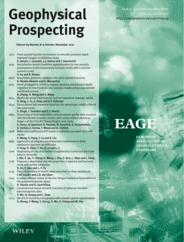-
oa Diagnosing of clay distribution in argillaceous sandstone by a rock physics template
- Source: Geophysical Prospecting, Volume 69, Issue 8-9, Oct 2021, p. 1700 - 1715
-
- 22 Dec 2020
- 18 Jun 2021
- 04 Aug 2021
Abstract
The elastic properties of argillaceous sandstones are significantly controlled, however, by the perplexing distribution of dispersed, cemented and matrix (including structural and layered) clay. The corresponding rock physics models are established to investigate the influence of different clay distribution on the elastic properties of sandstone. The rock physics modelling and laboratory experimental results exhibit that the higher the content of the matrix clay, the lower the elastic wave velocity. The dispersed and cemented clay increases the sandstone's velocity by reducing the porosity; the increase of dispersed clay only causes a slight increase in the elastic wave velocity in sandstone. In contrast, a small amount of cemented clay can significantly increase the velocity in sandstone. Based on these understandings, we construct a cross‐plot of P‐wave velocity and clay content as a template to diagnose clay distribution. Based on the rock physics model and empirical knowledge, we divide the template into four zones, namely, matrix, dispersed, cemented and mixed clay distribution zones. Then, we use the published experimental data and numerical modelling data to validate the template. Based on diagnosing the clay distribution, we introduce how to use the diagnostic results of the template to select a suitable rock physics model for argillaceous sandstone in Shengli Oil Field, East China. The selected rock physics model, guided by diagnosing the clay distribution, predicts P‐ and S‐wave velocity very well. The proposed rock physics template for diagnosing clay distribution also has potential application in well‐logging data interpretation, rock physics modelling and reservoir characterization.




